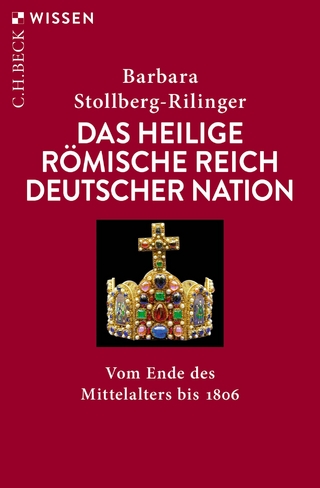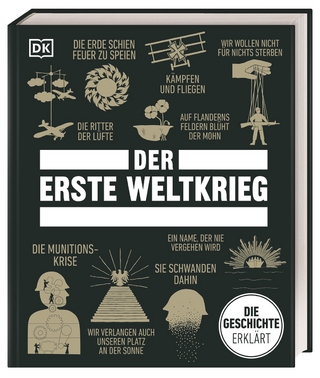
For Valour
The history of the Iron Cross and Wound Badge in German Southwest Africa 1914-1918
Seiten
2005
|
1., Aufl.
Namibiana Buchdepot (Verlag)
978-3-936858-85-3 (ISBN)
Namibiana Buchdepot (Verlag)
978-3-936858-85-3 (ISBN)
- Keine Verlagsinformationen verfügbar
- Artikel merken
This book hopes to fill the much neglected area of both the German and Namibian medallic history and research namely the so called colonial Iron Crosses and Wound Badges that were awarded in the German colony of South West Africa during the 1914 - 1915 war. The book will give the reader the background and events that led to the awarding of the 'Hildegard Orden', the only official variant of the 1914 Iron Cross, in German South West Africa. Also included is the history of both the Iron Cross and Wound Badge that were awarded for the 1914- 915 campaign in the German colony as well as name lists of those that were awarded these decorations. A name list of the few persons that were awarded the 'Hildegard Orden' is included for the very first time. Of particular interest is the section dealing on how the former German colonial soldiers, still residing in the country after the war, got their awards remembering that the country was now administered by the Union of South Africa and no longer by Germany. The book contains copies of various interesting documents relating to the 'Hildegard Orden', the Iron Cross and the Wound Badge that have been uncovered by the author during his research work for this publication. This is a book that is a must on the book shelves of every historian and colonial collector dealing with the former colony of German South West Africa.
Background:
There are many and varied stories, as well as perceptions, about when and how soldiers were awarded the Iron Cross in the colony of German South West Africa1. This book concentrates on the Iron Cross2 itself as well as telling the story of the unique 'Order of Hildegard'3, and further detailing how the former soldiers of the Imperial Colonial Troops for German South West Africa4 received their awards after the military campaign of 1914 - 15 in the colony, remembering that after the war the country was now no longer a German possession. This book does not aim to provide an historical background to, or aim to detail the military campaign in the colony, as these topics have been covered in great detail in other books, but rather concentrate on the decorations themselves.
The Iron Cross was founded on 10 March 18135 by the King of Prussia, Friedrich Wilhelm III, as a Prussian decoration6 and was awarded for bravery during the war of liberation against the occupation of Prussia by France under Napoleon Bonaparte. It was not awarded again until it was re-instated on 19 July 1870 by Wilhelm I, King of Prussia for the Franco-Prussian War of 1870-1871. At the successful conclusion of this war, the German Empire was formed with Wilhelm I as the Emperor - the Emperor however also remained the King of Prussia. When Great Britain declared war on Germany on 4 August 1914, the then Emperor of Germany, Wilhelm II, but now in his capacity as King of Prussia, re-instated again, for the second time, that old and well known Prussian bravery decoration - the Iron Cross - by a Royal Decree, dated 5 August 19147. The decree reads as follows:
Statute on the revival of the Iron Cross 1914
We, Wilhelm, by the grace of God, King of Prussia, etc. In view of the serious Situation in which the beloved Fatherland finds itself due to a war forced upon it, and in thankful remembrance of the deeds of valour of our fore fathers in the great years of the war of liberation and the battle for the unification of Germany, We wish to revive the order of the Iron Cross that was founded by our great grandfather who now rests in God. The Iron Cross can be awarded without distinction in rank or Standing to members of the army, the navy and the reserves, the members of the Voluntary Nursing Service and to individuals who are serving with the army or navy, or who are employed as army or naval officials, as a reward for merit on the battlefield. In addition, those persons who within the country have rendered Service to the well being of the German Military Forces as well as its allies, may receive the Cross.
Accordingly, We now decree the following:
1. The Iron Cross decoration that has been brought to life again for this war, will, as earlier, consist of two classes and a Grand Cross. The badge, as well as the ribbon, remains the same, but on the front, under the W with a crown, is now the date 1914.
2. The Second Class is wom from the buttonhole on a black ribbon with a white border if it is awarded for merit on the battlefield. For merit at home, it is worn on a white ribbon with black edges. The First Class is worn on the left breast, and the Grand Cross from around the neck.
3. The First Class can only be awarded if the Second Class has already been awarded, and is worn next to it.
4. The award of the Grand Cross is not subject to the prior award of the First or Second Class. It may be awarded for the successful conclusion of a battle during which the enemy was forced to leave their positions, or as a result of exceptional leadership in the army or navy, or for the capture of a major fortress, or for the defence of a fortress of major importance by its continued resistance.
5. All those in possession of the Military Badge of Honour First Class and Second Class with related Privileges give, without prejudice, the constitutional rule of an Honour Allowance over to the Iron Cross First and Second Class.
Attested by Our Eminent signature and attached Royal Seal.
Signed at Berlin, 5 August 1914.
WILHELM R.
von Bethmann Hollweg, von Tirpitz, Delbrück, Beseler, von Breitenbach, Sydow, von Trott zu Solz, Frhr. von Schorlemer, Leutze, von Falkenhahn, von Loebell, Kühn, von Jagow.
Background:
There are many and varied stories, as well as perceptions, about when and how soldiers were awarded the Iron Cross in the colony of German South West Africa1. This book concentrates on the Iron Cross2 itself as well as telling the story of the unique 'Order of Hildegard'3, and further detailing how the former soldiers of the Imperial Colonial Troops for German South West Africa4 received their awards after the military campaign of 1914 - 15 in the colony, remembering that after the war the country was now no longer a German possession. This book does not aim to provide an historical background to, or aim to detail the military campaign in the colony, as these topics have been covered in great detail in other books, but rather concentrate on the decorations themselves.
The Iron Cross was founded on 10 March 18135 by the King of Prussia, Friedrich Wilhelm III, as a Prussian decoration6 and was awarded for bravery during the war of liberation against the occupation of Prussia by France under Napoleon Bonaparte. It was not awarded again until it was re-instated on 19 July 1870 by Wilhelm I, King of Prussia for the Franco-Prussian War of 1870-1871. At the successful conclusion of this war, the German Empire was formed with Wilhelm I as the Emperor - the Emperor however also remained the King of Prussia. When Great Britain declared war on Germany on 4 August 1914, the then Emperor of Germany, Wilhelm II, but now in his capacity as King of Prussia, re-instated again, for the second time, that old and well known Prussian bravery decoration - the Iron Cross - by a Royal Decree, dated 5 August 19147. The decree reads as follows:
Statute on the revival of the Iron Cross 1914
We, Wilhelm, by the grace of God, King of Prussia, etc. In view of the serious Situation in which the beloved Fatherland finds itself due to a war forced upon it, and in thankful remembrance of the deeds of valour of our fore fathers in the great years of the war of liberation and the battle for the unification of Germany, We wish to revive the order of the Iron Cross that was founded by our great grandfather who now rests in God. The Iron Cross can be awarded without distinction in rank or Standing to members of the army, the navy and the reserves, the members of the Voluntary Nursing Service and to individuals who are serving with the army or navy, or who are employed as army or naval officials, as a reward for merit on the battlefield. In addition, those persons who within the country have rendered Service to the well being of the German Military Forces as well as its allies, may receive the Cross.
Accordingly, We now decree the following:
1. The Iron Cross decoration that has been brought to life again for this war, will, as earlier, consist of two classes and a Grand Cross. The badge, as well as the ribbon, remains the same, but on the front, under the W with a crown, is now the date 1914.
2. The Second Class is wom from the buttonhole on a black ribbon with a white border if it is awarded for merit on the battlefield. For merit at home, it is worn on a white ribbon with black edges. The First Class is worn on the left breast, and the Grand Cross from around the neck.
3. The First Class can only be awarded if the Second Class has already been awarded, and is worn next to it.
4. The award of the Grand Cross is not subject to the prior award of the First or Second Class. It may be awarded for the successful conclusion of a battle during which the enemy was forced to leave their positions, or as a result of exceptional leadership in the army or navy, or for the capture of a major fortress, or for the defence of a fortress of major importance by its continued resistance.
5. All those in possession of the Military Badge of Honour First Class and Second Class with related Privileges give, without prejudice, the constitutional rule of an Honour Allowance over to the Iron Cross First and Second Class.
Attested by Our Eminent signature and attached Royal Seal.
Signed at Berlin, 5 August 1914.
WILHELM R.
von Bethmann Hollweg, von Tirpitz, Delbrück, Beseler, von Breitenbach, Sydow, von Trott zu Solz, Frhr. von Schorlemer, Leutze, von Falkenhahn, von Loebell, Kühn, von Jagow.
| Zusatzinfo | zahlr. schw.-w. u. farb. Fotos |
|---|---|
| Sprache | englisch |
| Maße | 140 x 210 mm |
| Einbandart | Paperback |
| Themenwelt | Sachbuch/Ratgeber ► Geschichte / Politik ► Neuzeit bis 1918 |
| Schlagworte | Deutsch-Südwestafrika • Eisernes Kreuz • HC/Sachbücher/Geschichte/Neuzeit bis 1918 • Kaiserliche Schutztruppe • Namibia • Verwundetenabzeichen |
| ISBN-10 | 3-936858-85-3 / 3936858853 |
| ISBN-13 | 978-3-936858-85-3 / 9783936858853 |
| Zustand | Neuware |
| Haben Sie eine Frage zum Produkt? |
Mehr entdecken
aus dem Bereich
aus dem Bereich
vom Ende des Mittelalters bis 1806
Buch | Softcover (2023)
C.H.Beck (Verlag)
12,00 €
Die frühen Romantiker und die Erfindung des Ich
Buch | Hardcover (2022)
C. Bertelsmann (Verlag)
30,00 €


